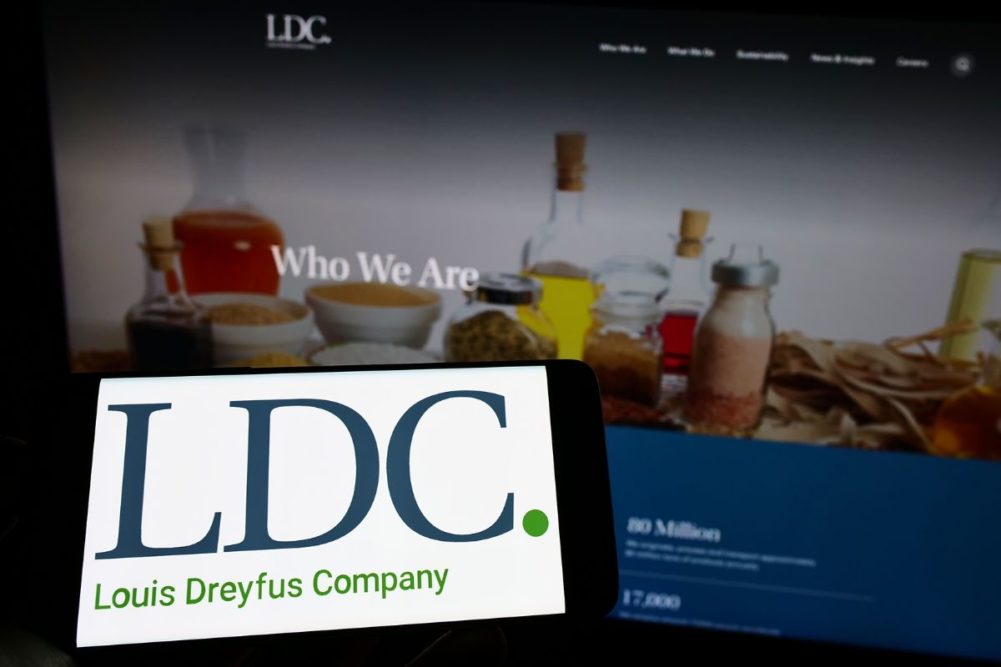ROTTERDAM, NETHERLANDS — Louis Dreyfus Company (LDC) on March 22 reported a 44% increase in net profit in 2022, netting just over $1 billion compared to $697 million the prior year.
The agribusiness giant noted that it “continued to fulfill its role to keep essential food and agricultural supply chains moving safely, reliably and responsibly amidst new and persistent geopolitical, macroeconomic and environmental turmoil.” The increase in earnings occurred during a year in which two of the world’s leading grain exporters (Russia and Ukraine) were at war, climate change impacted several key crop production areas, and inflation rocked the global economy.
“Despite new and unprecedented challenges and disruptions, LDC further diversified its geographic and commercial portfolio in an effort to preserve global access to essential products, always with a focus on the safety and well-being of its teams around the world as a priority,” said Margarita Louis-Dreyfus, chairperson of LDC’s supervisory board. “In this extremely complex environment, collaboration across value chains is more essential than ever to find shared solutions to common challenges and help provide sustenance for people worldwide.”
The company’s net sales were $59.9 billion for 2022 (up from $49.6 billion in 2021), while segment operating results stood at $2.61 billion for the year (up from $1.83 billion), supported by overall strong demand for the products commercialized by LDC. The company said it leveraged its global presence, market intelligence and risk management framework, reinforced since the advent of COVID-19, to capture profitable origination and sales opportunities while meeting customer demand, with EBITDA reaching $2.35 billion, compared with $1.62 billion in 2021.
“In the face of strong headwinds, we remained focused on keeping essential food, feed, fiber and ingredient supply chains moving to meet commitments to customers worldwide and secure continued financial and operating performance in 2022, while advancing with our strategic growth plans to balance strength and leadership in our core business with evolution for long-term relevance,” said Michael Gelchie, chief executive officer of LDC.
LDC said it continued to invest in core merchandizing operations, expand downstream and diversify revenue streams, and embrace innovative products, solutions and technologies in 2022. Among other developments, the company expanded its Grains & Oilseeds origination network with the acquisition of a leading grain business in Australia, invested in the construction of a joint-venture food industrial park in China, inaugurated a new lecithin plant in the United States, opened a new R&D facility in California, US, as the foundation of its new Plant Proteins business, diversified its B2C portfolio with new juice and cooking oil products, and continued to invest in innovative startups with the potential to disrupt and complement its business activities.
“Our work does not stop here, as we step up activation of our strategic plans to maintain the positive momentum we have built, adapting to the fundamental shifts we see playing out: evolving consumption trends toward alternative proteins and healthier diet options, digitalization and disruptive innovation in agriculture and food production, and accelerating developments to address the increasingly urgent need for a more sustainable food system amid global climate and macroeconomic uncertainty,” Gelchie said.
In summarizing its annual results, LDC also noted that it took important steps in its sustainability and decarbonization journey in 2022, including its commitment to eliminate deforestation and conversion of native vegetation for agricultural purposes from its supply chains by the end of 2025, as well as progress in specific product lines, geographies and focus areas, to be reported on as part of LDC’s upcoming Sustainability Report.
“The 33.6% emissions reduction target we announce today for scopes 1 and 2 by 2030 builds on the work of our Carbon Solutions team last year with all our business lines, to measure LDC’s emissions profile as a basis for target-setting and reporting,” Gelchie said. “Our target is aligned with Science-Based Target initiative criteria and consistent with the Paris Agreement goal to limit global warming to 1.5°C above pre-industrial levels, in accordance with our commitment to contribute to global climate goals.”




